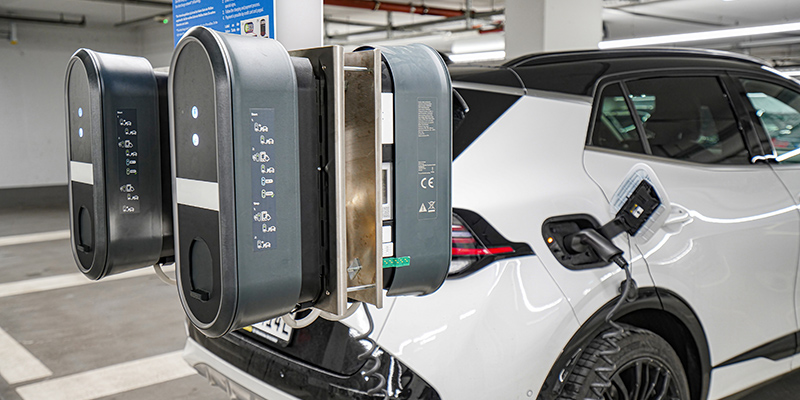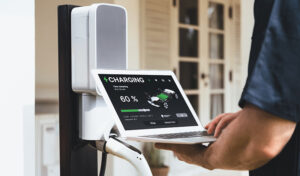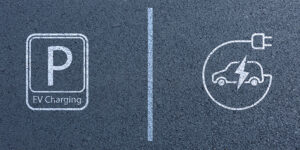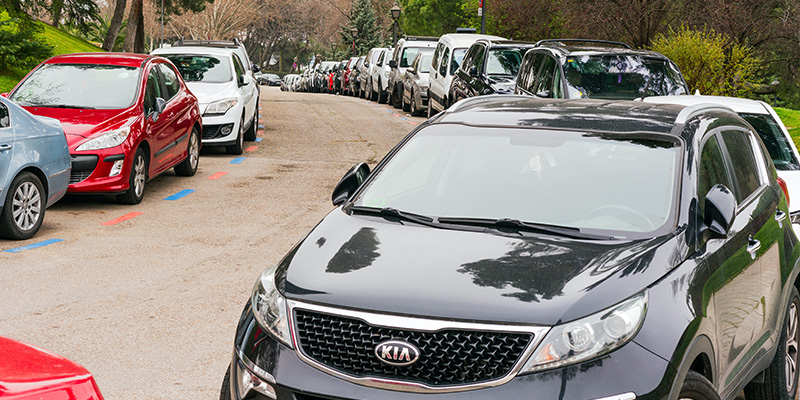Meeting Demands For EV Charging For Multifamily Properties

As the world continues its shift towards sustainable energy solutions, the popularity of electric vehicles is rapidly growing. This shift brings forth a new challenge: EV charging for multifamily properties. With the demand for EV chargers rising, multifamily properties must work to meet this demand and explore viable implementation methods.
Browse By Category
Sign up for Our Newsletter
As the world continues its shift towards sustainable energy solutions, the popularity of electric vehicles is rapidly growing. This shift brings forth a new challenge: EV charging for multifamily properties. With the demand for EV chargers rising, multifamily properties must work to meet this demand and explore viable implementation methods.
The Demand for EV Charging for Multifamily Properties
There is an undeniable surge in electric vehicles as of late, largely driven by environmental concerns. Electric vehicles offer reduced carbon emissions and a decreased reliance on fossil fuels. And with this comes an equally high demand for EV charging stations.
In 2019, the global electric vehicle charger market was valued at $3.8 billion. Projections will see that figure rise to $25.5 billion by 2027 — a steep increase in just 8 years.
While public charging stations are available, EV drivers would like to charge right from their homes. A 2018 study showed that 85% of all EV charging occurs at home. Another survey conducted in 2022 showed that renters are willing to pay more for the ability to charge their electric vehicles at home. More specifically, 27% of renters said they wanted EV charging stations and were open to paying $28.12 more per month to gain access to them.
The demand is apparent. Unfortunately, multifamily properties are falling behind. Homeowners associations, condominiums, and apartment complexes are under pressure to address this demand adequately. Failing to meet this demand may result in resident dissatisfaction and potentially loss of property value.
The Benefits of Electric Vehicle Charging for Multifamily Housing
Many multifamily properties are hesitant to install EV chargers. This is understandable, considering the challenges that come with multi-family EV charging. Electric vehicle chargers require a sizable initial investment as well as ongoing funding for maintenance. Moreover, not all of these communities have the right infrastructure for EV charging stations for multifamily dwellings.
Still, the benefits of multifamily EV charging far outweigh the costs. This will become even more evident as the focus shifts to more sustainable living practices. If multifamily homes wish to remain relevant and modern, adjustments are necessary.
Here are just some of the advantages that EV chargers for multifamily properties pose:
- Charging stations will give your community a greener image, a desirable feature among environmentally-conscious people.
- An apartment with electric car charging will position the property ahead of the curve as the demand for EV chargers will undoubtedly grow in the future.
- Properties with charging stations can accumulate Leadership in Energy & Environmental Design (LEED) points.
- EV charging multifamily properties can attract younger buyers or renters, with the new generation being more outspoken about environmental issues.
- Several states already have laws supporting the use of home and apartment electric car charging, and other states are sure to follow with their legislation.
How to Implement EV Chargers in Multifamily Properties
Implementing EV chargers in multifamily properties requires a strategic and well-thought-out approach to ensure efficient deployment and resident satisfaction. Here are key steps to effectively integrate EV charging in multifamily homes.
1. Conduct a Needs Assessment
Start by evaluating the current and anticipated demand for community or apartment EV charging. Conduct a resident survey to gauge their interest and the number of existing and potential EV owners. This information will allow multifamily communities to plan for the capacity and scale of the infrastructure needed.
2. Figure Out the Logistics
Determine the location and placement of EV chargers in the community. Will they be installed in public or common spaces? Do resident units have their own parking spots? Additionally, it is important to figure out metering requirements early on. This way, multifamily homes can make adjustments ahead of time.
3. Select an Appropriate Charging Solution
There are several levels of charging to choose from and even more brands of equipment. Choose between Level 1, Level 2, or DC fast chargers depending on the energy capacity and demand of the property. Other considerations include networking capabilities, output power rating, theft deterrence, and simultaneous charging limits.
It is not all about selecting the best chargers, though. Multifamily properties must also take their budget into account. Residential EV charger costs can vary from $700 to $900 for a Level 1 charger and $1,400 to $4,100 for a Level 2 charger. Public chargers can cost $596 to $813 for Level 1 and $938 to $3,127 for Level 2. For DC fast, the cost can range from $28,400 to $140,000.
Additionally, installation costs usually come separate from the actual cost of the unit. Installation costs for residential Level 1 chargers can vary from $400 to $600. The price goes up for Level 2 chargers, falling somewhere between $680 and $3,300 for residential units and an average of $3,000 for public units. Meanwhile, DC fast charger installation can cost between $18,000 and $66,000.
All things considered, Level 2 chargers are typically best suited for multifamily properties. This is because Level 2 chargers offer a good balance between infrastructure cost and charging speed.
 4. Collaborate with Experts
4. Collaborate with Experts
Don’t try to do everything alone. It is essential to work closely with industry experts, including EV charging providers and electrical engineers. These people can design an efficient yet cost-effective charging infrastructure. They can also provide valuable insights when it comes to the optimal placement of the stations, electrical load management, and technical specifications.
5. Secure Necessary Approvals and Permits
It is likely that you will need to obtain approvals and permits from local authorities and utility companies before you begin installation. The exact paperwork and procedures will depend on the location of your multifamily dwelling. This is also where industry experts, such as EV charging providers, can help.
6. Establish a Billing and Management System
Implement a fair and transparent billing system for EV charging usage. Explore options such as pay-per-use, subscription-based models, or allocating costs within association fees. Providers of EV charging stations usually have such features already set up.
Pitfalls of Implementing Multifamily EV Charging Stations
Electric vehicle charging stations are the future; implementing them is necessary for sustainable living. However, some challenges and pitfalls may arise when installing EV charging stations in multifamily properties.
1. High Initial Investment
The cost of installing charging infrastructure can be substantial, especially for properties with limited budgets. Funding and budgeting for EV chargers may be a hurdle, as it may require multifamily communities to raise dues or charge special assessments. That being said, state or utility incentives may be available to associations and building owners.
2. Electrical Upgrades and Capacity Issues
In older properties, the electrical infrastructure might need significant upgrades to support the additional load of EV charging stations. Upgrading may require significant investment and coordination with utility companies.
3. Parking Allocation and Equity Concerns
 Determining fair parking allocation for EV charging spots can cause disputes among residents. Managing this allocation equitably is a delicate task that requires careful planning and transparent communication.
Determining fair parking allocation for EV charging spots can cause disputes among residents. Managing this allocation equitably is a delicate task that requires careful planning and transparent communication.
Furthermore, HOAs and condo associations must figure out billing arrangements. Will drivers pay an hourly usage fee? How will initial investments and maintenance costs be divided in a community where not everyone drives an EV?
4. Maintenance and Repairs
EV charging stations require regular maintenance and occasional repairs. Establishing a reliable maintenance plan and addressing repairs promptly is crucial to ensure the continued functionality of the charging stations.
The Final Word
Adapting to the increasing demand for EV chargers is crucial to maintaining resident satisfaction and property values. HOWEVER, navigating EV charging for multifamily properties can be an uphill battle. In addition to industry professionals, HOA management companies can provide some much-needed guidance.
If you’re looking for an HOA management company in your area, you’ve come to the right place. Start your search using our online directory!
RELATED ARTICLES:
- HOA Electric Car Charging Policy: Why Have One?
- Senate Bill 40: What Is the Electric Vehicle Charging Act?
- HOA Solar Installation: Does The HOA Have The Power To Ban?
Trending Now
Related Article
Sign up for Our Monthly Newsletter
Sign up below for monthly updates on all HOA Resource
















